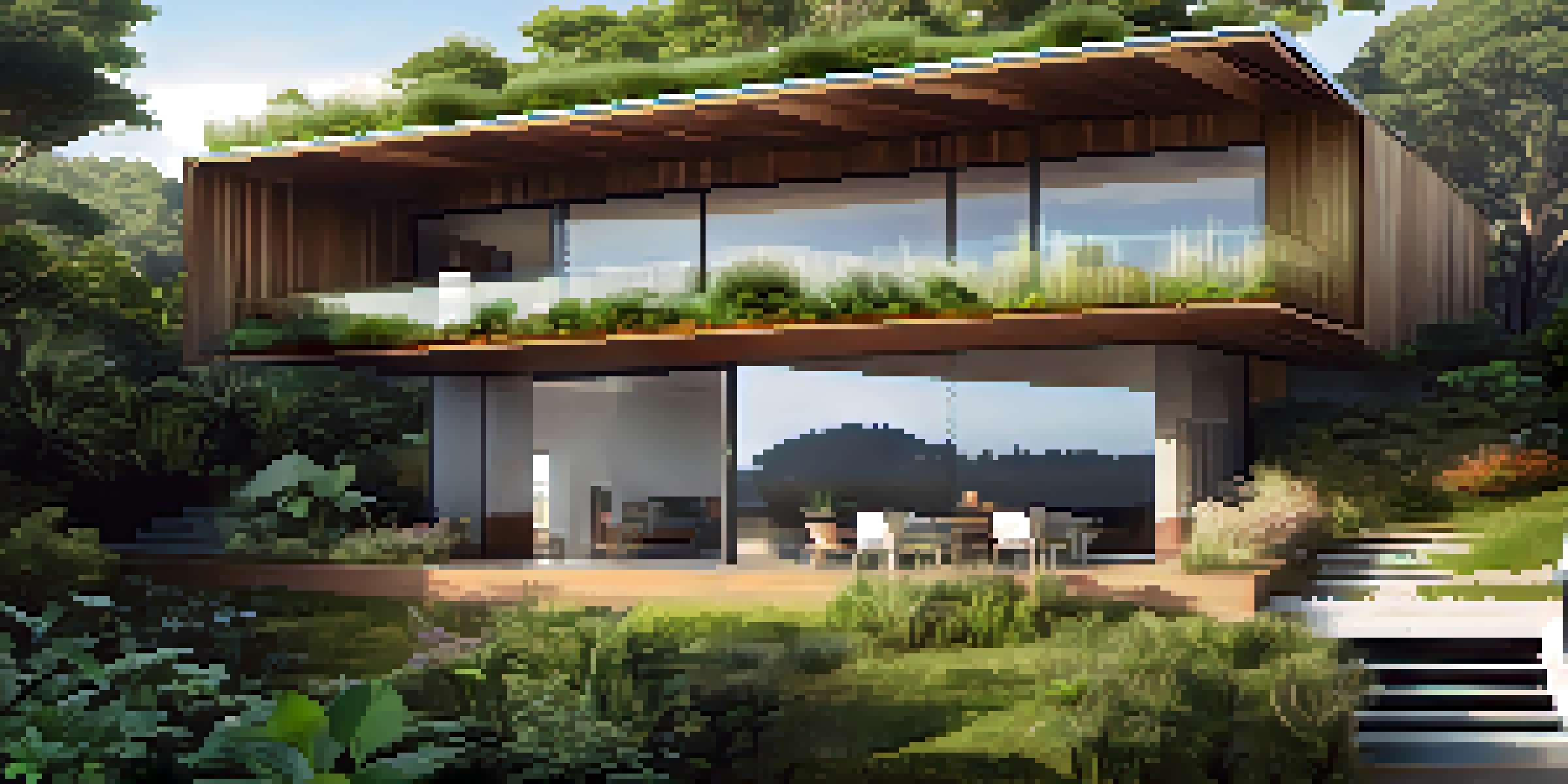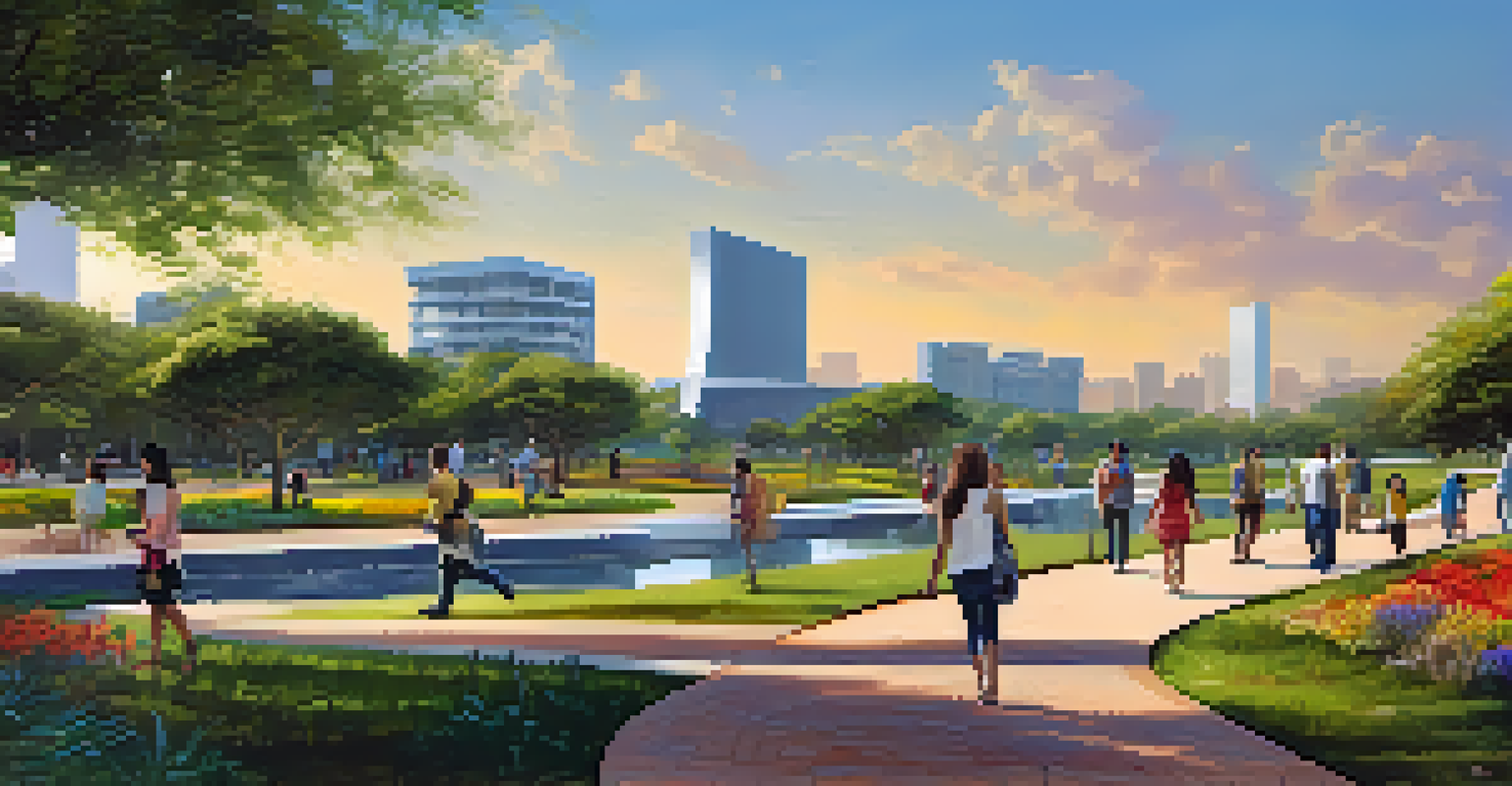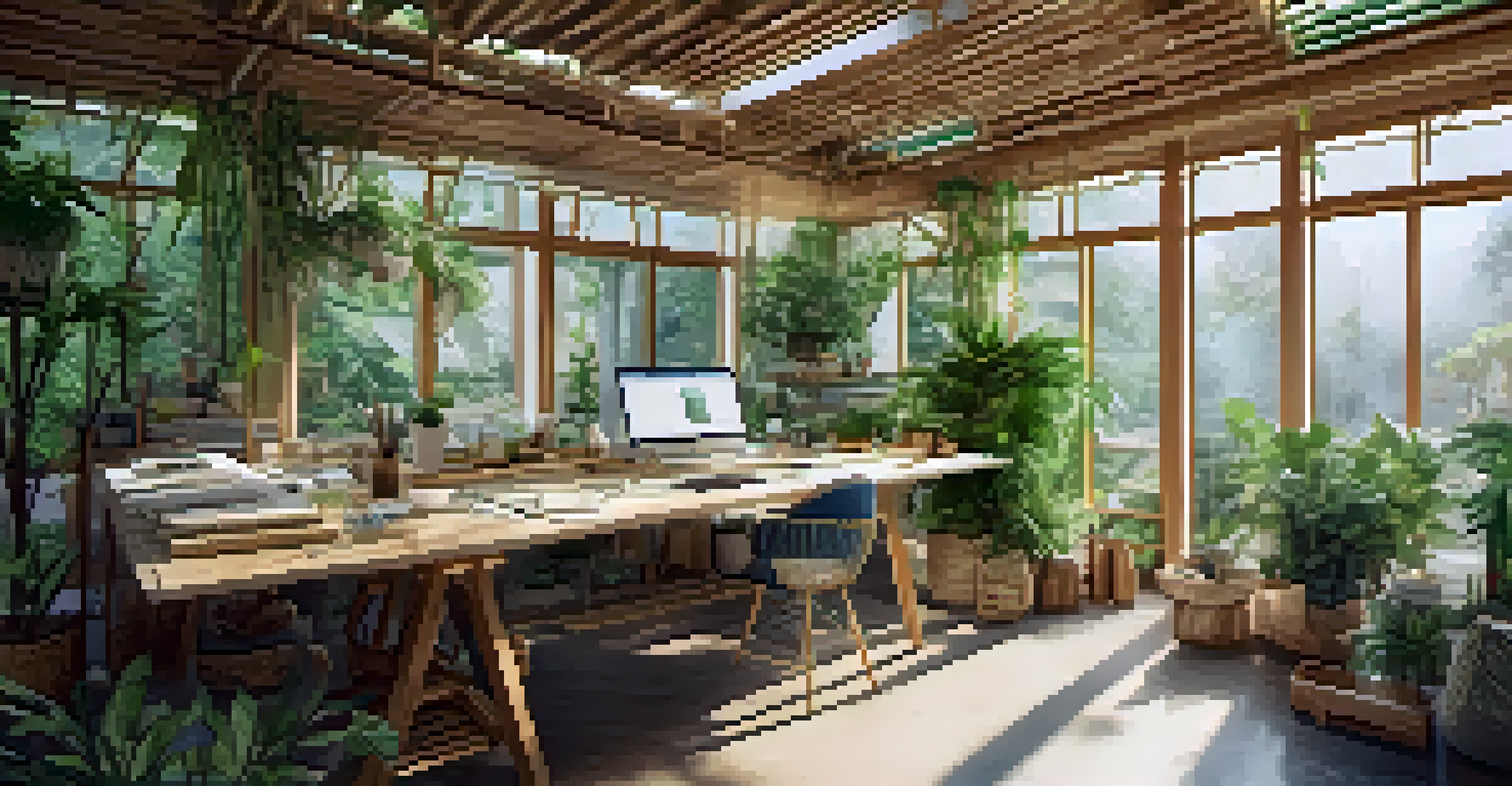Sustainable Architecture in Brazil: A Modern Perspective

The Rise of Sustainable Architecture in Brazil
Sustainable architecture is gaining momentum in Brazil, reflecting a global shift towards eco-friendly practices. This movement emphasizes not only the aesthetics of buildings but also their environmental impact. With a rich natural landscape, Brazil is uniquely positioned to embrace sustainability in architecture, leveraging local materials and techniques.
Architecture should speak of its time and place, but yearn for the timeless.
Cities like São Paulo and Rio de Janeiro are leading the charge, with architects increasingly incorporating green roofs, solar panels, and rainwater harvesting systems into their designs. These innovations are essential for reducing energy consumption and minimizing waste. Moreover, the integration of nature within urban spaces is becoming a priority, promoting biodiversity and enhancing the quality of life.
This rise in sustainable architecture also aligns with Brazil's commitment to international environmental agreements. By adopting these practices, the country showcases its dedication to preserving its rich ecosystems while fostering economic growth. As we explore this topic further, we’ll delve into specific projects and initiatives that exemplify this modern perspective.
Key Principles of Sustainable Design
At the heart of sustainable architecture are principles that prioritize energy efficiency and resource conservation. This involves careful planning of building orientation, natural ventilation, and the use of renewable materials. For example, bamboo, which grows abundantly in Brazil, serves as a sustainable alternative to traditional timber.

Another vital principle is the concept of bioclimatic design, which tailors buildings to their local climate. This means designing structures that adapt to the surrounding environment, reducing the need for artificial heating or cooling. Imagine a house that stays cool during the hot Brazilian summer simply by utilizing strategic window placement and shading.
Sustainable Practices Are Thriving
Brazil is increasingly integrating sustainable architecture, demonstrating a commitment to eco-friendly designs in urban environments.
These principles not only benefit the environment but also create healthier living spaces for inhabitants. Natural light, fresh air, and the use of non-toxic materials contribute to well-being. This holistic approach is what makes sustainable architecture not just a trend, but a necessary evolution in building practices.
Notable Sustainable Projects in Brazil
Brazil is home to several groundbreaking sustainable architecture projects that highlight its commitment to eco-friendliness. One standout example is the Eden House in São Paulo, designed with a green roof and walls made from recycled materials. This innovative design not only reduces energy consumption but also blends seamlessly with the surrounding landscape.
The best way to predict the future is to invent it.
Another noteworthy project is the Parque da Cidade, a sustainable urban park in Brasília that incorporates native plant species and sustainable drainage systems. This park serves as a model for integrating green spaces into urban planning, offering residents a retreat from the hustle and bustle while promoting biodiversity.
These projects demonstrate how sustainability can coexist with modern design. They inspire other architects and developers to rethink their approach, showing that eco-consciousness does not compromise aesthetics. Instead, it enriches the architectural narrative, crafting spaces that honor both people and the planet.
The Role of Government Policies
Government policies play a crucial role in promoting sustainable architecture in Brazil. Initiatives such as tax incentives for green building practices encourage developers to adopt eco-friendly designs. These incentives help offset the initial costs associated with sustainable materials and technologies.
Additionally, the Brazilian government has implemented regulations that mandate energy efficiency standards for new buildings. This proactive approach ensures that sustainability is not just a choice but a requirement. As a result, architects and builders are now more inclined to innovate in their designs, knowing that they are supported by legislation.
Community Involvement Drives Success
Engaging local communities in the design process fosters ownership and ensures that projects meet their cultural and environmental needs.
However, challenges remain, particularly in ensuring that these policies are effectively enforced across diverse regions. Ongoing dialogue between government, architects, and the community is essential to refine these policies and promote widespread adoption of sustainable practices in architecture.
Community Engagement in Sustainable Architecture
Community engagement is vital for the success of sustainable architecture projects in Brazil. By involving local residents in the design process, architects can better understand the specific needs and cultural nuances of the community. This collaborative approach fosters a sense of ownership and pride in the project, making it more likely to succeed.
For instance, in the favelas of Rio de Janeiro, community-driven initiatives have led to the creation of sustainable housing that reflects the local culture while addressing environmental concerns. This grassroots involvement not only empowers residents but also ensures that the designs are practical and relevant.
Furthermore, educational programs that raise awareness about sustainable practices encourage communities to adopt eco-friendly habits. By promoting understanding and appreciation for sustainable architecture, residents become advocates for their environment, paving the way for future initiatives.
Challenges Facing Sustainable Architecture in Brazil
Despite the progress made, sustainable architecture in Brazil faces numerous challenges. Economic factors often hinder the adoption of green technologies, as initial costs can be prohibitive for some developers. This creates a gap between the desire for sustainability and the financial realities of construction.
Moreover, a lack of awareness and understanding of sustainable practices among the general public can slow down adoption rates. Many people may not see the immediate benefits of green buildings, leading to resistance against change. Education and outreach are essential to bridging this gap and fostering a culture of sustainability.
Policies Support Green Building
Government initiatives and regulations promoting energy efficiency are essential for encouraging architects to adopt sustainable practices.
Lastly, regulatory hurdles can complicate the implementation of sustainable designs. Navigating bureaucratic processes can be cumbersome for architects and developers, deterring innovative projects. Streamlining these processes and providing clearer guidelines would facilitate the growth of sustainable architecture in Brazil.
The Future of Sustainable Architecture in Brazil
Looking ahead, the future of sustainable architecture in Brazil is promising. As global awareness of climate change increases, there is a growing demand for buildings that are both environmentally friendly and socially responsible. This shift presents an exciting opportunity for architects to innovate and push boundaries.
New technologies, such as 3D printing and smart materials, are emerging, providing fresh avenues for sustainable design. These innovations can enhance the efficiency of construction processes and reduce waste, aligning perfectly with the principles of sustainability. Imagine a future where buildings are not just structures but living entities that adapt to their environment.

In conclusion, sustainable architecture in Brazil is not just a passing trend; it is an integral part of the country's future. By embracing innovative designs, supportive policies, and community engagement, Brazil can lead by example in the global movement towards sustainability, creating spaces that nurture both its people and the planet.